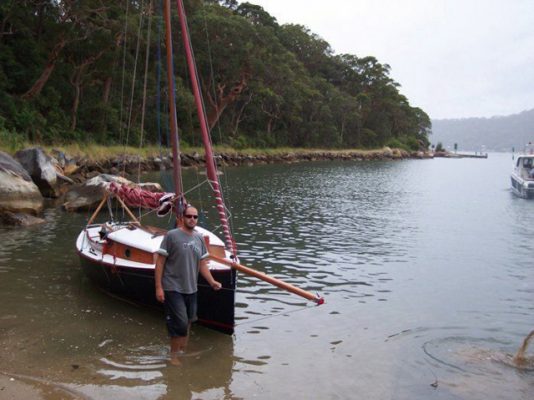From Paglesham to Tamborine – the Secret story, by Derek Ellard
My ancestors were all sailors, and apparently my first words were ‘da-da’ and ‘boat’. I lived on the East Coast and as a boy sailed the Blackwater, the Crouch and the Thames Estuary.
I loved the endless soft green marshes from Shoeburyness to Bradwell, the mournful cries of the winter wildfowl and the infinite estuary skies brimful of larks on a summer afternoon.
I lusted after smacks, bawleys, and barges, and was shocked to discover the fabled Mersea mud-berthed houseboats – those achingly elegant first-class racers from the early 20th century – with sheds on their decks. Thankfully they are all now sailing again and certified shedless.

The original Secret, ‘a sweet little smack yacht’, is still afloat today (c) Roach Sailing Association
It was ace cabinetmaker Rick Hughes who first introduced me to Secret and her beguiling ways. His father commissioned her from Shuttlewoods at Paglesham in the 1930s. She was, and still is, a sweet little smack yacht, and a secret because Hughes senior didn’t want his new wife to find out until she was well and truly launched. It was, after all, the 1930s – there was a depression on, and the war clouds were lowering. Of course, the boat did become a family secret, but by the 1970s she had been sold.
I commiserated with the Hughes family and gave them a small pencil sketch of her. Rick and I then hatched a plan to build a new, smaller one. Well, it took over three decades and a move to the hyper-bright colours of subtropical Queensland to get the job done, but I think Hughes and Hughes would be pleased with the new Secret. I kept the gaff cutter rig, of course, and I made sure she looked the part: but under the water is a thoroughly modern hull, albeit with a three-quarter fixed keel.

Mrs F Shuttlewood, wife of the builder, launches Secret in April 1932 – (c) Roach Sailing Association
The big news was in how they were sold – ready to cruise or race, but also ready to build, in kit form. We’d been fine-tuning our kit production for over a decade, and I thought it was high time someone designed a trailerable Essex smack – or, should I say, smackette. After all, this was the boat I had really always wanted.
So, there were no grown oak frames, no pitch pine planking and no oakum – instead, there was laminated cedar, marine ply and epoxy, but she displaced no more than 700kg and hit 6 knots in 9 of wind straight out of the box. A flight of fancy no more, then; and while the original Secret’s DNA may be diluted, Practical Boat Owner’s new project honours the seafarers of old – and it’s certainly an honour for all of us here on Tamborine Mountain.




